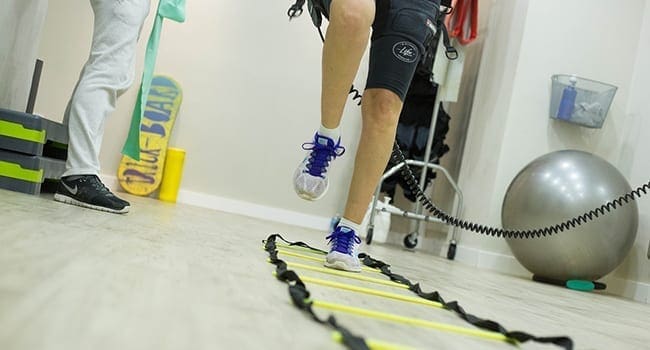“Cardiorespiratory physiotherapy encompasses many things, from teaching patients different types of breathing exercises, mobilization exercises and manual techniques to providing postural advice and correction by positioning the body for optimal lung function and oxygen management,” said William Tung.
Tung is a teaching assistant in the Faculty of Rehabilitation Medicine. “It can be very important for those recovering from the virus.”
Tung has been helping teach students practical skills in cardiorespiratory courses for more than 10 years. He’s also the physiotherapy professional practice lead at the Royal Alexandra Hospital and has seen first-hand how physiotherapy intervention can assist those afflicted with COVID-19.
“Different patients may need different exercises. But, in general, everyone can benefit from exercises to help with mobility, cardiac and pulmonary function, flexibility, strength, endurance, mental health, independence and self-care management, and more,” he said.
Stephanie Oviatt, a physiotherapist and clinical practice lead at South Health Campus in Calgary, agreed that physiotherapy plays a pivotal role, especially during recovery from acute respiratory distress syndrome, which is common in severe cases of COVID-19.
“While the patients are very ill, requiring prone positioning to improve oxygenation, physiotherapy can provide guidance to nursing staff to ensure patients are positioned correctly in order to decrease the chance of pressure injuries and nerve impingements, both of which could have a significant impact on the patients’ recovery,” said Oviatt, who graduated from the U of A’s master of science in physical therapy program in 2011.
For those who are in critical care, physiotherapists can help with weaning off ventilators and beginning early rehabilitation to lessen the muscle deconditioning and weakness that happens during a severe illness.
But even patients who are well enough to go home will still require some rehabilitation services.
“Once the patient has left the intensive care unit, the rehabilitation team continues to help progress their exercise tolerance, monitor their reactions to exercises and provide individualized strengthening exercises to help gain back the strength lost during their ICU stay,” said Dana Downing, a physiotherapist at the Royal Alexandra Hospital who graduated from the U of A program in 2008.
“We also continue to educate patients on when and how to exercise, and what signs and symptoms to watch out for during exertion that might slow their progress,” Downing added.
Amanda Anderson is Interim Director of Marketing and Communications with the Faculty of Rehabilitation Medicine at the University of Alberta. This article first appeared in the University’s online publication, Folio.
The views, opinions and positions expressed by columnists and contributors are the author’s alone. They do not inherently or expressly reflect the views, opinions and/or positions of our publication.


